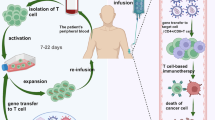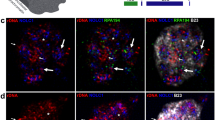Abstract
Aspects of the ingestion and early intracellular fate of homologous, [3H]-thymidine-labeled chromosomes (donor) were studied in recipient Wi-L2 cells in the absence of reutilized radioactivity. As much as 67% of the cell-associated radioactivity was resistant to hydrolysis by DNase I after 4 h of incubation. Cell fractionation and electron microscope autoradiography indicated that chromosome uptake was rapid, into both cytoplasmic and nuclear fractions and was facilitator and dose dependent. Sedimentation analysis demonstrated that at 4 h donor DNA of approximate single-strand mol wt of 1–6×106, as compared to 6–12× 106 for chromosomal DNA, was recoverable in cell fractions. By 6 h, a significant portion of the nucleus-associated donor DNA was converted into material of higher mol wt, although no evidence was found for integration into recipient DNA, Cytoplasmic donor DNA continued to be degraded. An average number of chromosome equivalents of nucleusassociated donor DNA to recipient cell nuclei of 1–4 was obtained and its relationship to the lower frequency of chromosome-mediated gene transfer is discussed.
Similar content being viewed by others
Literature cited
McBride, O. W., and Ozer, H. L. (1973).Proc. Natl. Acad. Sci. U.S.A. 70:1258–1262.
Burch, J. W., and McBride, O. W. (1975).Proc. Natl. Acad. Sci. U.S.A. 72:1797–1801.
Degnen, G. E., Miller, I. L., Eisenstadt, J. M., and Adelberg, E. A. (1976).Proc. Natl. Acad. Sci. U.S.A. 73:2838–2842.
Tobey, R. A., and Ley, K. D. (1971).Cancer Res. 31:46–51.
Willecke, K., Lange, R., Kruger, A., and Reber, T. (1976).Proc. Natl. Acad. Sci. U.S.A. 73:1274–1278.
Willecke, K., and Ruddle, F. H. (1975).Proc. Natl. Acad. Sci. U.S.A. 72:1792–1796.
Wullems, G. J., van der Horst, J., and Bootsma, D. (1975).Somat. Cell Genet. 1:137–152.
Wullems, G. J., van der Horst, J., and Bootsma, D. (1976).Som. Cell Genet. 2:155–164.
Shani, M., Huberman, E., Aloni, Y., and Sachs, L. (1974).Virology 61:303–305.
Horst, J., Kluge, F., Beyreuther, K., and Gerok, W. (1975).Proc. Natl. Acad. Sci. U.S.A. 72:3531–3535.
Davidson, R. L., Adelstein, S. J., and Oxman, M. N. (1973).Proc. Natl. Acad. Sci. U.S.A. 70:1912–1916.
McBride, O. W., and Ozer, H. L. (1973). inPossible Episomes in Eukaryotes, Le Petit Colloquia on Biology and Medicine, Vol. 4, (edited by L. G. Silvestri) North-Holland, Amsterdam, pp. 255–267.
Ebina, T., Kamo, I., Takahashi, K., Homma, M., and Ishida, N. (1970).Exp. Cell Res. 62:384–388.
Sekiguchi, T., Sekiguichi, F., and Yamada, M.-A. (1973).Exp. Cell. Res. 80:223–236.
Yagi, Y. (1970). inControl Mechanisms in the Expression of Cellular Phenotypes, Ninth Symposium of the International Society for Cell Biology, (edited by H. A. Padykula) Academic Press, New York, p. 121.
Yosihide, T. H., and Sekiguchi, T. (1968).Mol. Gen. Genet. 103:253–257.
Simmons, T., Heywood, P., and Hodge, L. (1973).J. Cell Biol. 59:150–164.
Hodge, L. D., Robbins, E., and Scharff, M. D. (1969).J. Cell Biol. 40:497–507.
Lerner, R., and Hodge, L. D. (1971).J. Cell. Physiol. 77:265–276.
Xeros, N. (1962).Nature (London) 194:682–683.
Maio, J. J., and Schildkraut, C. L. (1967).J. Mol. Biol. 24:29–39.
Graham, F. L., and van der Eb, A. J. (1973).Virology 52:456–467.
Shatkin, A. J. (1969). InFundamental Techniques in Virology, (edited by K. Habel and N. P. Saltzman). Academic Press, New York, pp. 231–237.
Earle, W. R. (1943).J. Natl. Cancer Inst. 4:165–212.
Magee, B. B., Paoletti, J. and Magee, P. T. (1975).Proc. Natl. Acad. Sci. U.S.A. 72:4830–4834.
Hodge, L. D., and Scharff, M. D. (1969).Virology 37:554–564.
Levine, A., and Ginsberg, H. (1968).J. Virology 2:430–439.
Pettersson, U., Mulder, C., Delius, H., and Sharp, P. A. (1973).Proc. Natl. Acad. Sci. U.S.A. 70:200–204.
Caro, L. G., and van Tubergen, R. P. (1962).J. Cell Biol. 15:173–188.
Pagano, J. S. (1969). inFundamental Techniques in Virology, (edited by K. Habel and N. P. Saltzman) Academic Press, New York, pp. 184–197.
Kao, P. C., Regan, J. D., and Volkin, E. (1973).Biochim. Biophys. Acta 324:1–13.
Pasternak, C. A., Summer, M. C. B., and Collin, R. C. L. S. (1974). InCell Cycle Controls, (edited by G. M. Padilla, I. L. Cameron, and A. Zimmerman) Academic Press, New York, pp. 117–124.
Berg, T., Melbye, B., Johnsen, S. R., and Prydz, H. (1975).Exp. Cell Res. 94:106–110.
Comings, D. E., and Jack, L. O. (1973).Exp. Cell Res. 82:175–191.
Author information
Authors and Affiliations
Rights and permissions
About this article
Cite this article
Simmons, T., Lipman, M. & Hodge, L.D. Uptake and early fate of metaphase chromosomes ingested by the Wi-L2 human lymphoid cell line. Somat Cell Mol Genet 4, 55–76 (1978). https://doi.org/10.1007/BF01546493
Received:
Revised:
Issue Date:
DOI: https://doi.org/10.1007/BF01546493




